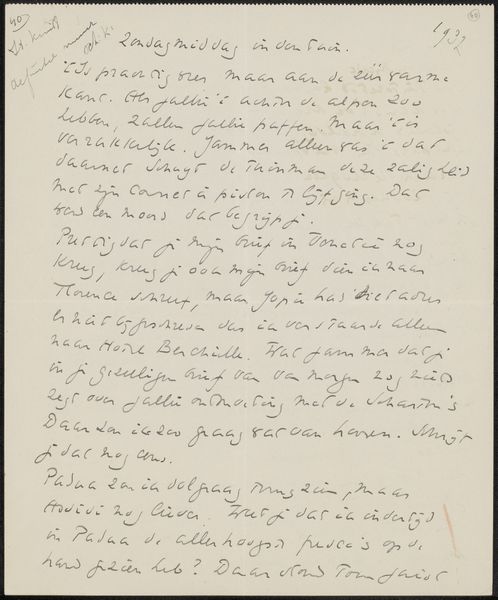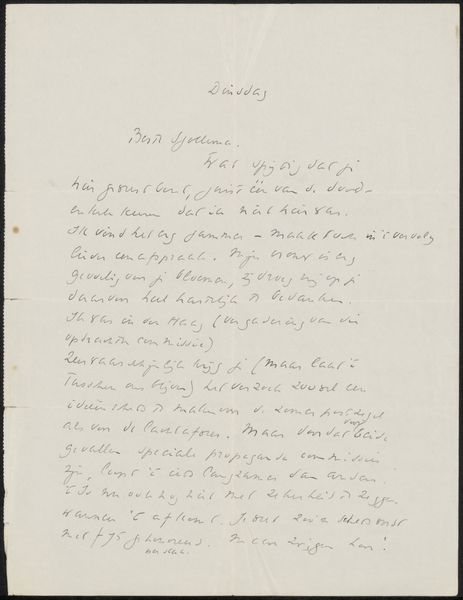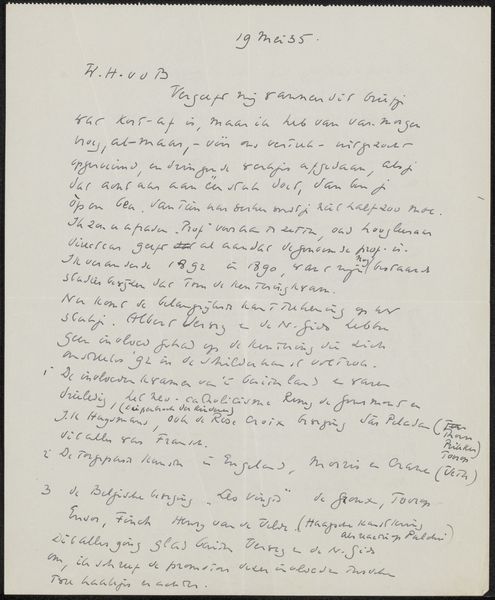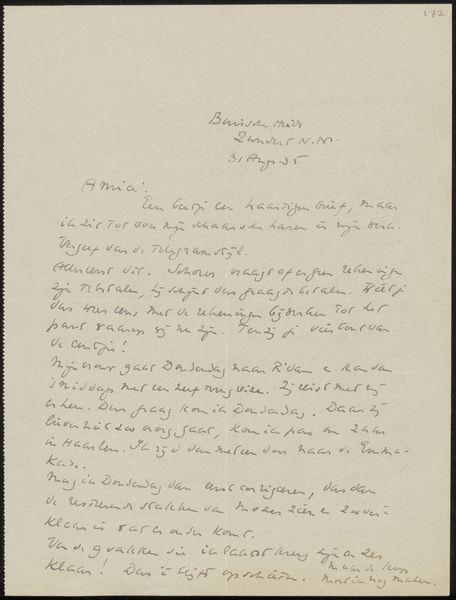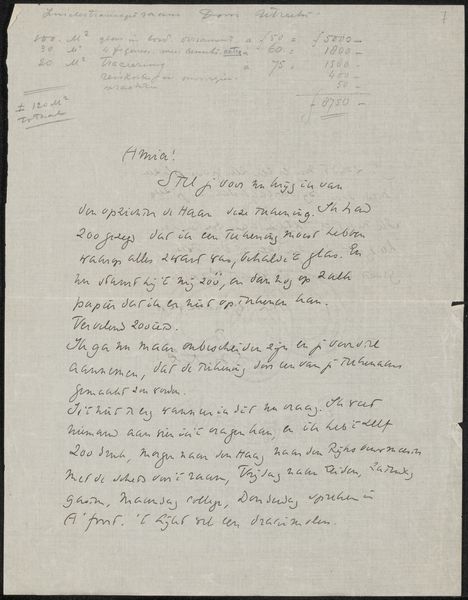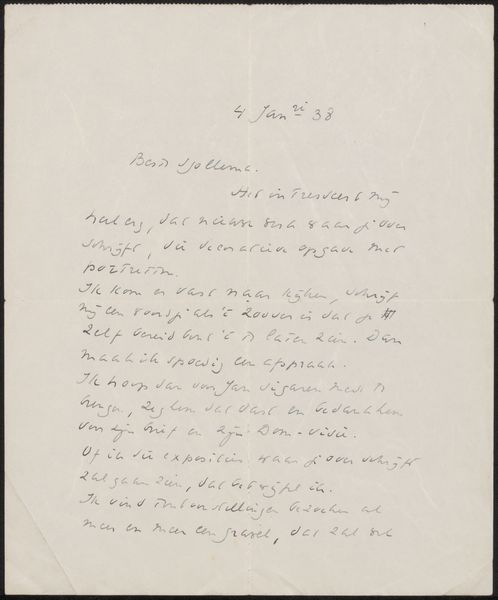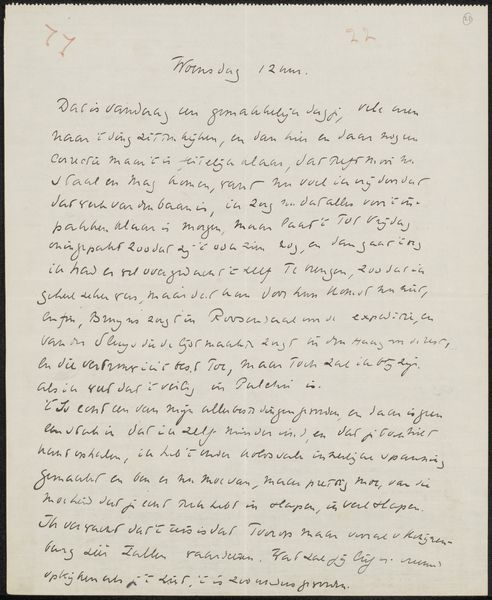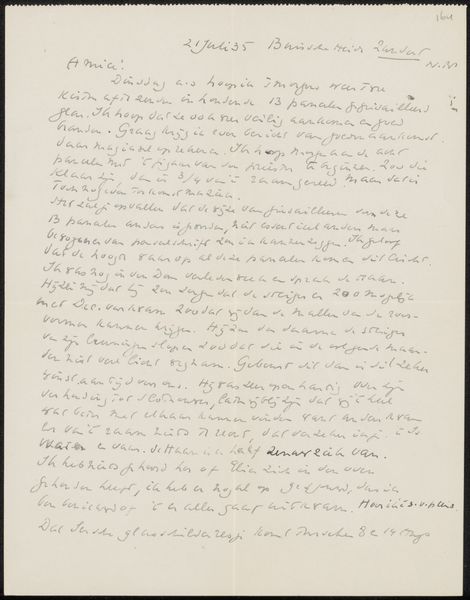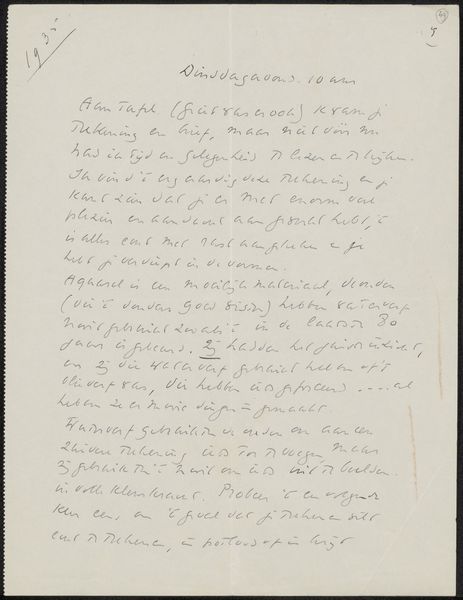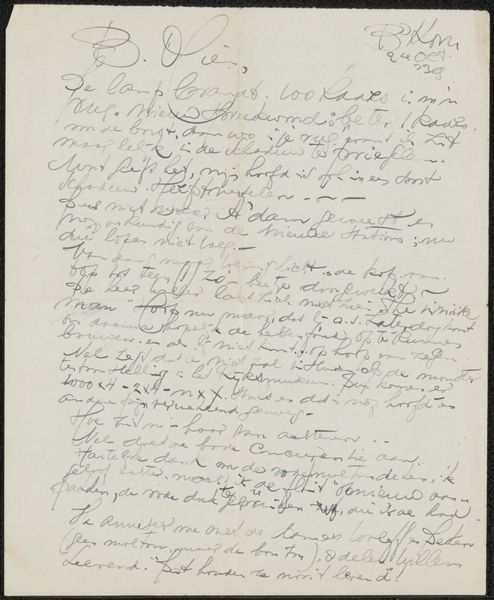
drawing, paper, ink, pen
#
drawing
#
ink paper printed
#
paper
#
ink
#
linocut print
#
hand drawn
#
pen work
#
sketchbook drawing
#
pen
#
calligraphy
Copyright: Rijks Museum: Open Domain
Curator: Here we have "Brief aan Ina van Eibergen Santhagens-Waller" created in 1936 by Richard Nicolaüs Roland Holst. It resides in the collection of the Rijksmuseum. Editor: The flowing script gives it an intimate, almost hurried quality, doesn't it? A sense of immediacy, despite its age. It feels incredibly personal. Curator: Holst was known for his calligraphy, so the artistry isn't accidental. We are viewing the means of communication and artistic expression intertwining beautifully. The penmanship elevates a simple letter to something more visually compelling. He skillfully uses ink on paper. Editor: Definitely. And look how dense the text is, packed onto the page. Paper itself was once a precious commodity; now it feels very accessible. This piece provides us insights into the social conventions that valued written correspondence. Who was this Ina? Curator: Ina was, notably, the spouse of a socialist mayor. The text's details further contextualize that Holst would find his roots in socialist principles. Such an alliance would inevitably shape his views and thus his art. Editor: And I bet his socio-political beliefs also influenced the labor that goes into such art-making. Penmanship in itself is physical labor and he doesn't mask the process of using a basic ink pen. Curator: Precisely. Think too about the intersectional experience for those such as Ina and how her identity and social standing inform a distinct reading. Editor: It's this unique way of looking, this careful construction in pen on a basic paper, that makes the "Brief" truly beautiful, despite seeming just another old text on aged paper. Curator: The drawing opens doors into diverse perspectives concerning class, the labor movement, artistic intent. Its small format only amplifies how rich the content. Editor: A valuable example that shows us to look past initial aesthetic qualities and deeply study the artwork's physical nature with art history and its socio-economic conditions. Curator: Indeed. I come away feeling even more appreciative of the complexities artists can address using rudimentary materials.
Comments
No comments
Be the first to comment and join the conversation on the ultimate creative platform.
